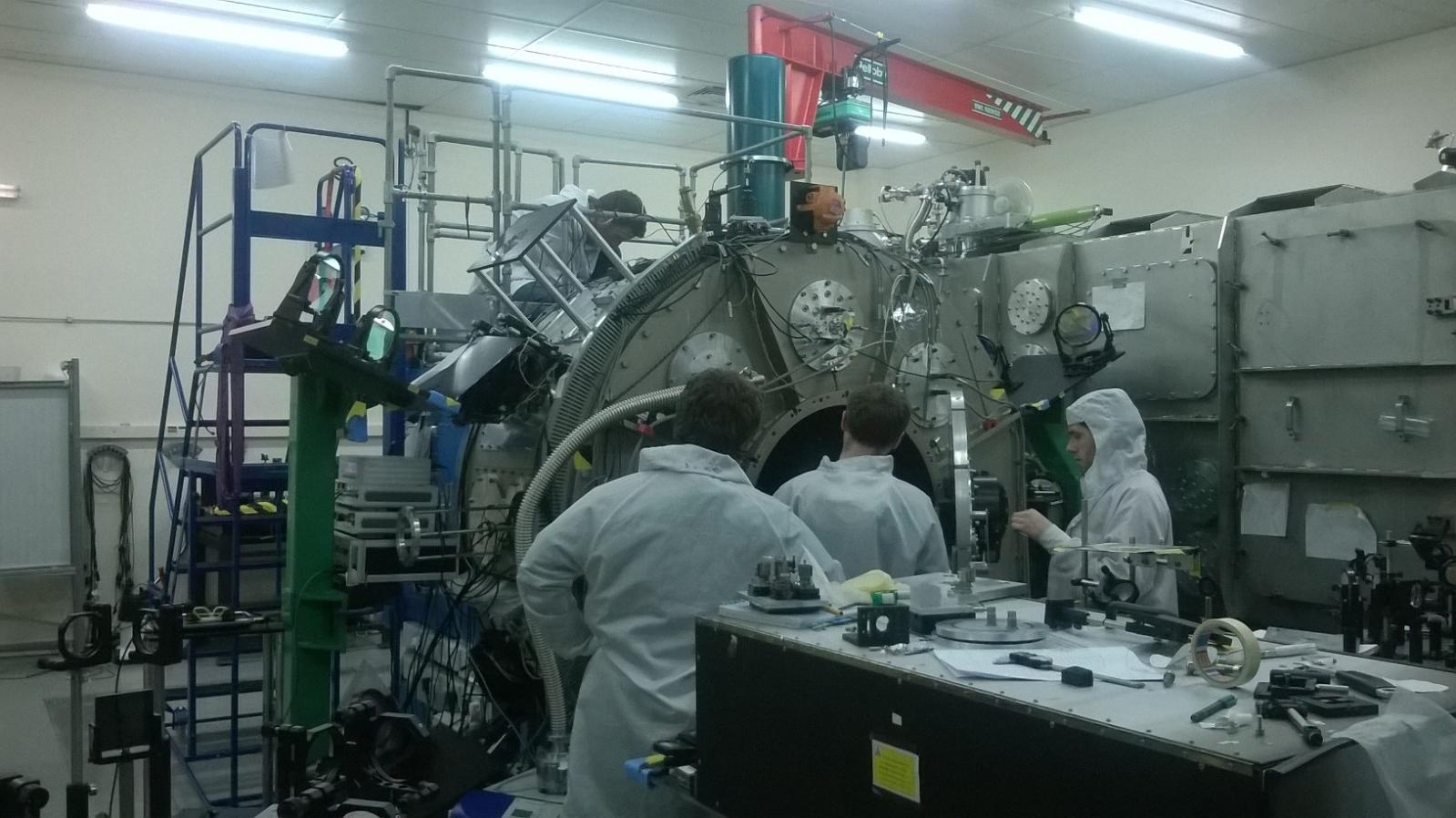Warm dense matter
Warm Dense Matter (WDM) is a state of matter at conditions of near-solid densities (0.01 to 10g/cc) temperatures typically from between 1-10 eV (104-105 K) which exists naturally in the cores of giant planets such as Jupiter and Saturn. Understanding the physics of these extreme conditions may help elucidate the history of the Solar System and the formation of planets. This regime also occurs in plasmas produced in the laboratory with radiative heating and strong shock waves. A knowledge of the properties of WDM is also important for technological developments such as plasma sources of X-rays and Inertial Confinement Fusion.
WDM physics is an exciting field for research. Theoretical modeling is difficult: electron degeneracy and strong ion-ion coupling mean it cannot be modelled either as classical plasmas or solids. In the laboratory, it can be produced by irradiating solids with optical lasers or X-ray fluxes. In our group we use laser facilities at the Central Laser Facility (VULCAN and Astra lasers), Ecole Polyechnique (LULI2000 laser) and ILE Osaka (Gekko laser) along with our colleagues in collaborating groups. We also employ the FLASH XUV Free electron laser (FEL) facility in Hamburg as well as the LCLS X-ray laser at Stanford. The diagnostic techniques we use centre mainly about X-ray scattering as a way of elucidating the microscopic structure but we also work on X-ray and XUV emission spectroscopy and development of laser-plasma sources of ultra-fast X-ray bursts down to picosecond timescales (10-12 s).

KEY RECENT PUBLICATIONS
- Warm Dense Matter. Laboratory generation and diagnosis, D. Riley, IOP Publishing, Bristol, 2021
- C. Hyland, S. White, B. Kettle, R. Irwin, D. Bailie, M. Yeung, G. Williams, R. Heathcote, I. East, C. Spindloe, M. Notley, D.Riley, Measurements of free-free absorption in warm dense aluminium, Plasma Phys. Control. Fusion, 63, 074003, 2021
- S. White, B. Kettle, J. Vorberger, C.L.S. Lewis, S.H. Glenzer, E. Gamboa, B. Nagler, F. Tavella, H.J. Lee, C.D. Murphy, D.O. Gericke, D. Riley, Time-dependent effects in melting and phase change for laser-shocked iron, Phys. Rev. Res., 2, 033366, 2020
- D.Riley, Generation and characterisation of warm dense matter with intense lasers, Plasma Phys. Contr. Fusion 60, 014033, 2018
FUNDING
Direct measurements of Temperature and Transport Properties at Extreme Conditions, UKRI FLF Fellowship, 2022-2026
